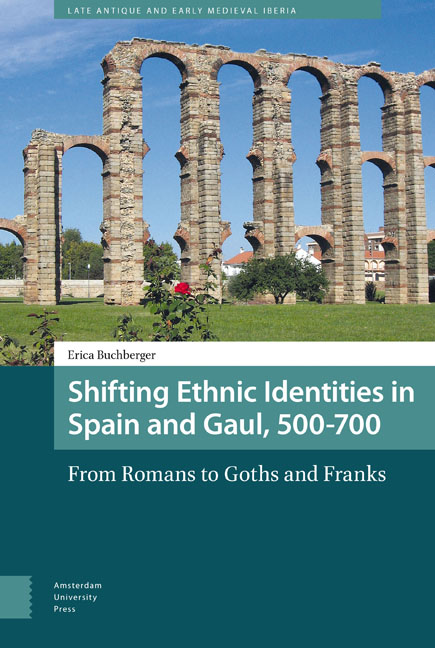Part II - From a Roman to a Frankish World in Merovingian Gaul
Published online by Cambridge University Press: 12 February 2021
Summary
As in the Visigothic kingdom, a new political identity developed in the Merovingian kingdoms of the Franks during the sixth and seventh centuries. By the seventh century, political Frankishness had developed to the point that people of any background could identify with it, usually without renouncing their other identities. Unlike in Spain, however, Frankish political identity did not become so all-encompassing as to eliminate Roman and other identities from the map. In part because of continued geographical separation which created Frankish (north), Roman (south), Burgundian (Rhône valley) and other enclaves, and in part because of official sanction of continued ethnic difference in the Lex Ribuaria and later law codes, Merovingian society developed an environment in which at least two layers of identity remained especially salient and mutually compatible. A diverse number of ethnic identities were still expressed and even encouraged, overlaid by a single Frankish political identity that unified inhabitants under the common banner of the Frankish kings as their subjects and participants in a kingdom-wide society.
To understand why Gaul was different, we need to look at the establishment and growth of the Merovingian kingdoms. When the Western Roman Empire ceased to be in 476 – or 480 – Gaul had already been settled and governed by ‘barbarians’ for some time. The Visigoths had been imperial federates in Aquitaine in southern Gaul since 418, and the Burgundians in the Rhône valley since c. 440. The Franks were never settled by treaty on Roman territory and gradually entered northern Gaul from the north and east. Clovis became king of a small region in 481 and began a campaign of conquest, first lands held by other Franks, then those held by their neighbours. In 507, he defeated Alaric II, the king of the Visigoths, at Vouillé and took most of his territory in Gaul, pushing the Visigoths firmly into Spain, as we have seen. Around the same time, Clovis converted both himself and many of his people to Catholicism. Thus religious unity came early enough to the Frankish kingdoms that divisions along these lines never became problematic the way they did in Iberia.
- Type
- Chapter
- Information
- Shifting Ethnic Identities in Spain and Gaul, 500–700From Romans to Goths and Franks, pp. 101 - 106Publisher: Amsterdam University PressPrint publication year: 2017



